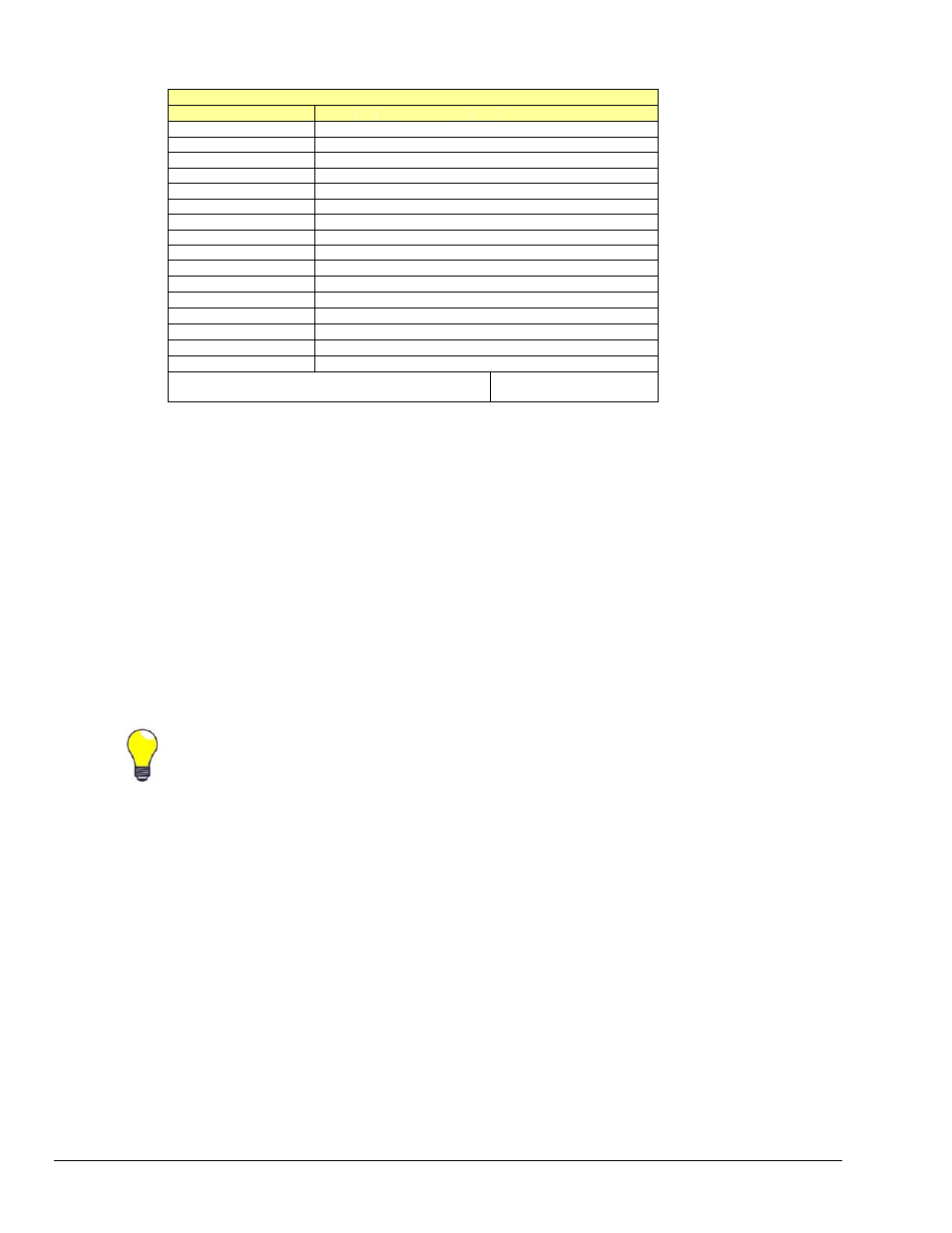Measurement Computing WaveBook rev.5.3 User Manual
Page 50

Worksheet for Power Requirements
Product
Qty
×
Amps
=
Totals
WaveBook/512A
×
=
WaveBook/516 /516A
×
=
WaveBook/516E
WBK10A
×
=
WBK11A
×
=
WBK12A
×
=
WBK13A
×
=
WBK14
×
=
WBK15
×
=
WBK16
×
=
WBK17
×
=
WBK18
×
=
WBK25
×
=
WBK30
×
=
WBK40
×
=
WBK41
×
=
Maximum
Amps
It is important to supply your system with adequate, reliable power. For this reason, you need to know
your system’s power requirement. Knowing the power requirement is also important when using batteries
to power modules, as you should know a safe runtime, i.e., how long you can run the system before
recharging is required.
Input voltage to the WaveBooks and to the system modules (WBK10A, WBK14, WBK15, WBK16,
WBK17, WBK18, WBK25, WBK40, and WBK41) must be in the range of 10 to 30 VDC and can come
from an AC-to-DC adapter or from another source, such as a battery. System cards such as theWBK11A,
WBK12A, or WBK13A get power from their host WaveBook or the WBK10A expansion module.
Available AC-to-DC adapters include the TR-40U, which has an input of 90-264 VAC and an output
of 2.2 amps @ 15 VDC.
Battery options include the DBK30A, DBK34A, and other 10 to 30 VDC sources, such as car batteries.
The DBK30A provides 14 VDC and when fully-charged has a storage capacity of 3.4 A⋅hr; car batteries
have much higher capacities. The basic formula for battery life is:
Runtime (hr) = Battery capacity (A⋅hr) / Current load (A)
Battery life and performance depend on various factors including battery type, condition, charge
level, and ambient temperature. Be sure you consider these factors, especially when runtime is a
critical.
2-30 System Setup and Power Options
979194
WaveBook User’s Manual
